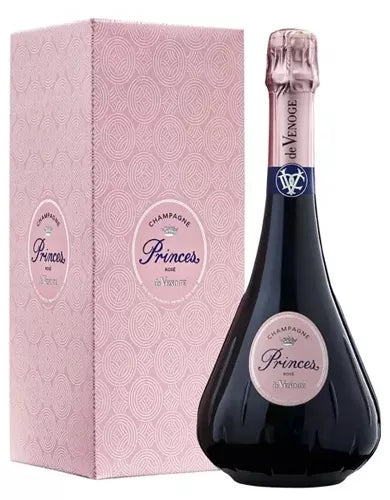Description
The Venoge Princes Rosé is a brand new Cuvée in the De Venoge range. This 100% Pinot Noir Rosé is bottled in an elegant bottle with a characteristic pattern. Only the very best Pinot Noir grapes have been selected for this Cuvée. The result is an aromatic Champagne with a juicy and refreshing character.
Family business De Venoge
The De Venoge family business has been producing high-quality champagne since 1837. The family originates from Switzerland, on the shores of Lake Leman, where the small Venoge River flows into the ocean. The blue band found on each label is a nod to that river. In the heart of the Champagne region, they own a beautiful historic building. The house is particularly known for its Cordon Bleu Brut, which is marketed with a distinctive band on the label. Founder Henri-Marc was also the first to design an illustrated label in the history of Champagne. At De Venoge, nothing is left to chance, starting with the selection of the grapes. A rigorous selection process is made to select the most optimally ripe grapes. Some of the grapes are purchased, while others come from their own 19-hectare vineyard. The unique character is partly due to the fact that De Venoge uses only the first pressing. The wine is aged for a minimum of three years instead of the mandatory 15 months.Enjoy a full and creamy De Venoge Rose
With a pale pink color, this Princess Rose radiates in the glass. The aroma reveals delightful aromas of strawberries, berries, and citrus. The palate is full and creamy, with a juicy, refreshing texture. The fruity notes are also clearly evident in the taste. Bottled in a beautiful, uniquely shaped bottle, reminiscent of the crystal decanters used in the early 20th century.Product details
| Alcohol content | 12.0% |
|---|---|
| Size | 0.75L |
| Region | Champagne |
| Producer | The Venoge |
| Varietal(s) | Pinot Noir |


